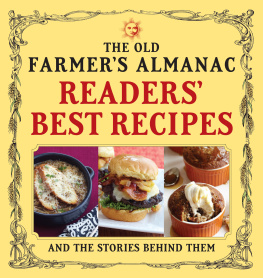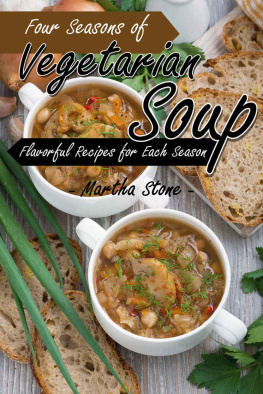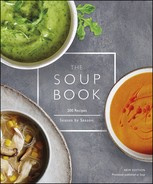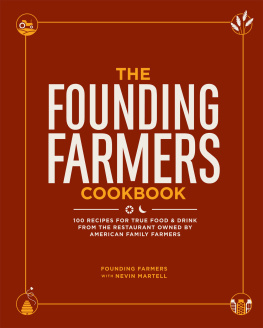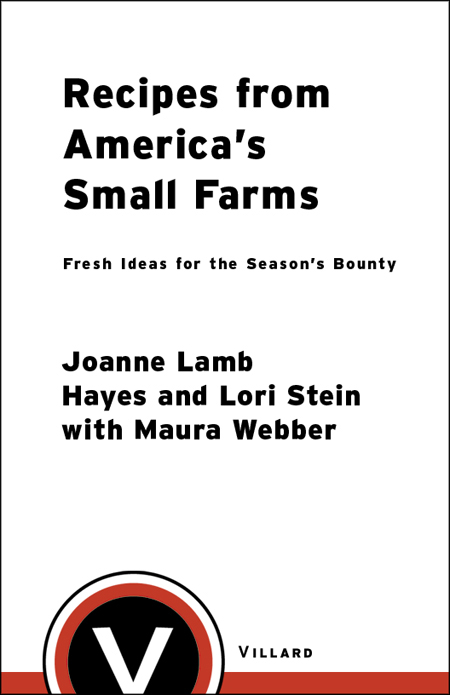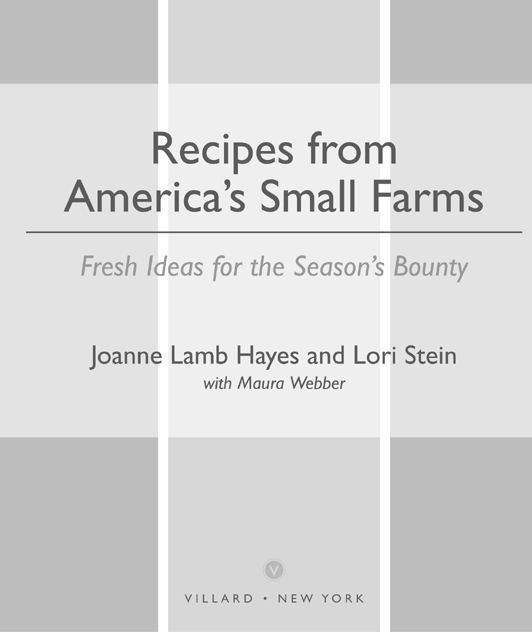Webber Maura - Recipes from Americas small farms : fresh ideas for the seasons bounty
Here you can read online Webber Maura - Recipes from Americas small farms : fresh ideas for the seasons bounty full text of the book (entire story) in english for free. Download pdf and epub, get meaning, cover and reviews about this ebook. City: New York, year: 2003, publisher: Random House Publishing Group;Villard, genre: Home and family. Description of the work, (preface) as well as reviews are available. Best literature library LitArk.com created for fans of good reading and offers a wide selection of genres:
Romance novel
Science fiction
Adventure
Detective
Science
History
Home and family
Prose
Art
Politics
Computer
Non-fiction
Religion
Business
Children
Humor
Choose a favorite category and find really read worthwhile books. Enjoy immersion in the world of imagination, feel the emotions of the characters or learn something new for yourself, make an fascinating discovery.

- Book:Recipes from Americas small farms : fresh ideas for the seasons bounty
- Author:
- Publisher:Random House Publishing Group;Villard
- Genre:
- Year:2003
- City:New York
- Rating:5 / 5
- Favourites:Add to favourites
- Your mark:
Recipes from Americas small farms : fresh ideas for the seasons bounty: summary, description and annotation
We offer to read an annotation, description, summary or preface (depends on what the author of the book "Recipes from Americas small farms : fresh ideas for the seasons bounty" wrote himself). If you haven't found the necessary information about the book — write in the comments, we will try to find it.
Abstract: Recipes from Americas Small Farms gathers the most exciting, original, and authentic recipesusing the freshest ingredientsfrom those who know best how to set a table anytime of the year. Favorite recipes from farmers across the country and members of Community Supported Agriculturea national organization that facilitates direct farmer-to-consumer sales of producewill inspire home cooks everywhere. Also included are recipes from high-profile chefs such as Rick Bayless (Frontera Grill), Peter Hoffman (Savoy), Roxanne Klein (Roxannes), and Kevin von Klause (White Dog CafE). Readers will find it easy to locate recipes, organized by food family, that call for the vegetables and fruits that are in season, readily available, and simple to use. Recipes like Creamy Turnip Soup; Heirloom Tomatoes with Fresh Herbs, Toasted Pine Nuts, and Tapenade Toast Points; Greek Zucchini Cakes; and Hirokos Fusion Choy with Tahini-Soy Dip give common produce exotic appeal. The book includes a chapter on meat, poultry, eggs, and seafood, and there are vegan recipes throughout. Each chapter provides details about the history, characteristics, and nutritional qualities of specific fruits and vegetables. Cooking techniques, useful sidebars, and a glossary make this book an indispensable resource. From the Trade Paperback edition
Webber Maura: author's other books
Who wrote Recipes from Americas small farms : fresh ideas for the seasons bounty? Find out the surname, the name of the author of the book and a list of all author's works by series.

